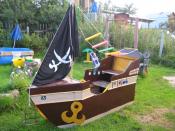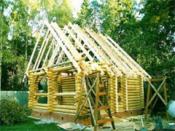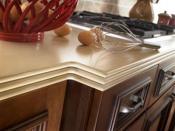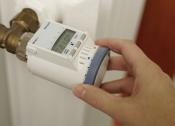Search
Login
Recommended
Street lights in the garden
All daylight hours, from early morning to late evening, in the warm season, gardeners and residents of the private sector are busy with pleasant chores, planting and caring for plants.
But in the evening I sometimes want to sit in a circle of friends and relatives over a cup of tea, in a cozy garden or gazebo. Garden lighting saves from darkness, sometimes it saves in the literal sense: from falls and injuries on steps and paths and from uninvited guests. Beautifully installed fixtures, in a design, like jewelry from pearls of an online store are scattered between green spaces.
But the light in the garden is the most real opportunity to express yourself in design by installing beautiful lamps, making lamps with your own hands, the used lamps with sensors are interesting, when the lamps light up along the movement, thanks to motion sensors, in the most unexpected places of the garden, they look interesting balloons scattered across the lawn.
Moreover, the trendy garden is a garden with decorative lighting. In this article we will tell you what you need to know when installing fixtures with your own hands.
Content
- General information
- Design
- Wiring video
- Installation of fixtures
- The use of solar-powered garden lights
- Luminous balls with motion sensor
- Glowing Flower Pot
- Selection of a photo on the topic
General information
When installing fixtures, first of all, it is necessary to identify the main groups of street (garden) lamps, they differ by the principle of wiring:
-low-voltage, DC lamps with a voltage of 12 volts;
- lamps of direct and alternating current with a voltage of 24 volts;
-High-voltage lamps for the garden voltage of 220 volts.
When choosing and installing (installing) street lights, what should I look for?
There are several steps to this process:
1 Design.
2 Wiring.
3 Installation or installation of the lamp.
Design
When designing, several points should be made:
- highlight the main lines (contour) of the fixtures. It should be borne in mind that not all lights will work all night, and some light the way to certain areas only when they need to be used.
- if desired and possible, it’s good to create a decorative backlight, it will be an original and unexpected surprise for the holiday, create a joyful mood, emphasize the festive atmosphere, decorate the interior and, of course, will not work all the time.
It is necessary to comply with electrical safety rules when installing outdoor electrical equipment, it is important to carefully select.
1.Equipment of electrical protection, providing automatic shutdown during overload.
2. Install only electrical appliances and equipment intended for outdoor use.
3.All external electrical equipment must be protected by an RCD, as they provide an almost instantaneous blackout when a short circuit to ground occurs.
4. Use a double insulated power tool.
5. The cross-section of the electric wire used to power the lamps and fixtures - its thickness, must correspond to the load power, in this case, the heating of the conductive wire will be minimal.
6. When using incandescent lamps in luminaires, it is necessary to use only those lamps whose power corresponds to the passport data of the luminaire; otherwise, when using more powerful lamps, heating and deformation of the lampholder, and in some cases the lampshades themselves or their plastic parts, is possible.
Wiring
The high-voltage cable is wired when the following requirements are met:
1.Apply only double insulated wire;
2. When wiring, a protective sleeve is used in the form of a metal corrugation or asbestos-cement pipe;
3. cable depth not less than 0.7 meters;
4. When laying a low-voltage cable, the procedure is simplified: it is simply decorated or deepened very slightly into the ground so that it is not noticeable.
At the same time, it is necessary to take into account the fact that low-voltage lighting is often mobile, in the form of a spotlight on the legs and it can be rearranged or removed at any time.
Installation of fixtures
Having determined the location of the fixtures, you can proceed with the installation, while keeping in mind:
1.When connecting the electric cable to the lamp, it is necessary to have a margin of about 40 centimeters in length (a pigtail that must be hidden in the body of the lamp), in the future this will relieve surprises when connected.
2. Under the luminaire, a concrete base is necessary, for this a recess is made in the ground, with a depth of 15 cm (depending on the total weight of the luminaire installed), then it is laid in layers: crushed stone, sand, concrete.
Usually, lamp posts have embedded elements, or a kind of platform with holes for bolts. After preparing the base under the pillar, without waiting for the concrete to harden completely, with the help of a level, set the lamp perpendicular to the base and mark the location of questionnaire bolts in the holes of the embedded element.
We remove the lamp, then insert the bolts into the marked places so that their length is enough to tighten the nut after installing the lamp.
If the lamp does not have a built-in element, or you mount the lamp of your own design, in the form of a support column (you can take a piece of pipe, the length you need, with a diameter of 32-45 mm), then the thickness of the concrete substrate must be increased and the pole itself is installed in concrete, strictly vertically using level.
The use of solar-powered garden lights
Sundaya-Ulitium lamps function through the efficient use of solar energy. These lamps were used mainly in Africa and South America, where many settlements are not yet connected to the mains. They are very effective in organizing independent lighting in gardens, on terraces, in garages, recently they began to be sold in Europe.
These lamps weigh very little, are easy to install, and easily fit together into a single system, which consists of Sundaya Home kits.
Each of the sets includes a modern LED-lamp (white, black or color) and a solar module, designed for 3-12 watts. (battery energy -60 or 120 kJ).
There are three levels of brightness control: 240, 120 and 25 lumens. All components of the module are ready to connect.
Luminous balls with motion sensor
New spherical LED luminaires (dark blue, orange, yellow and white) with a diameter of 64 mm. work on batteries and are well suited in the dark corners of the house (you can garden, in good weather).
Their body can rotate 360 \u200b\u200bdegrees, providing directional glow for 20 seconds. The motion sensor has a detection range of 120 degrees, with a range of up to 5 meters.
These luminaires are mounted on a special glued mounting plate using an integrated magnet, each ball is equipped with three LEDs.
The total power consumption of such a luminaire is 0.6 watts., Calculated for at least one year of operation with 10 starts daily.
Glowing Flower Pot
Plantpot LED Accu Outdoor is a mobile luminous cache-pot powered by a battery.
This plant in the garden looks amazing. The battery lasts for six hours of continuous operation.
Multicolour energy-saving LED lamps give soft, diffused light, the hue of which is controlled by the remote control.





